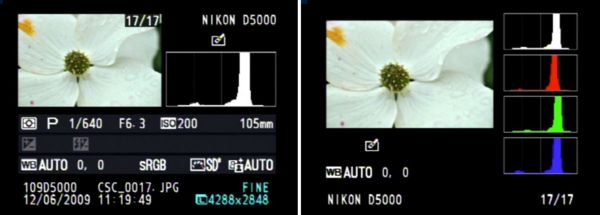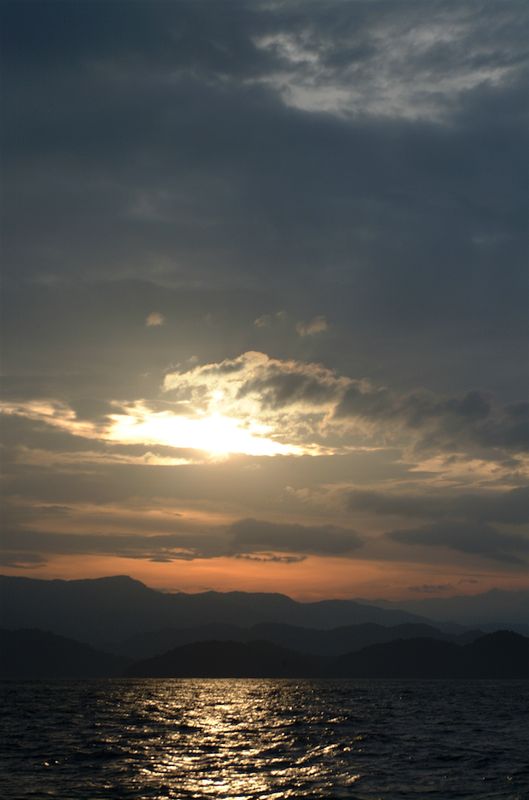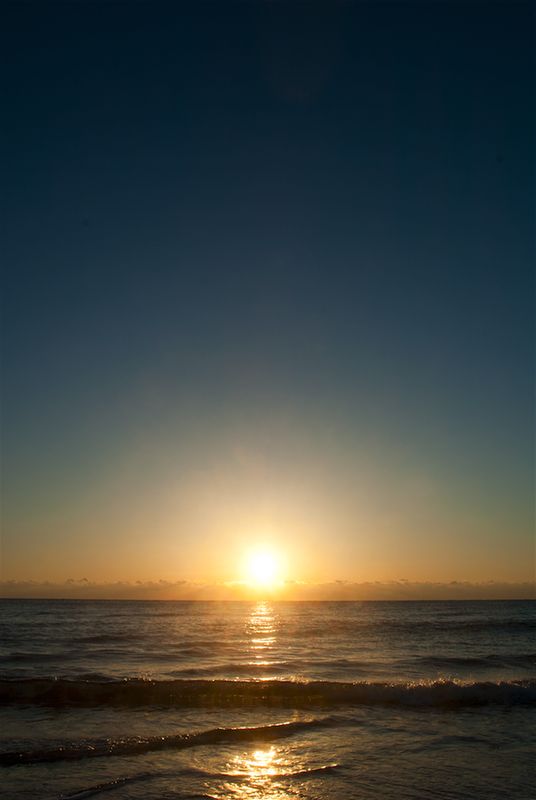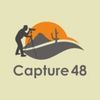Sekonic light meters
Feb 6, 2016 23:36:05 #
I have never used a hand held light meter before for getting the proper settings for a good photo. I am interested in low light shots of landscaping in thE mountains. If I want to take a photo with my Fujifilm XT- camera and get it right the first time, do I meter the scene with the light meter, and then the light meter give me information such as that I would use an ISO setting of 400 along with a speed of 1/250 of a second and expose for 14 seconds, and if I do that, will it give a pretty accurate photo of what I was looking for? I'm trying to understand what a good light meter will do to aid my photography. Thanks! Carl
Feb 7, 2016 00:25:16 #
Great question and I can only give you my opinion. The answer is no. You really don't need one for Landscape Photography as there is an excellent light meter already in your camera. If you were a pro portrait photographer my answer would be yes. Many professional photographers like having complete control of the creative process and prefer the accuracy and control a hand held light meter provides..
Feb 7, 2016 00:37:07 #
You said,
"with a speed of 1/250 of a second and expose for 14 seconds," I think you meant something else.
If you use the meter as an incident meter, it reads the light hitting the scene, not the light reflected from the scene. So in theory, with the proper exposure, dark things will be dark and light thing will be light.
Since with film you didn't change ISO from shot to shot, the meters have you set the ISO you intend to use. The Sekonic I use allows you to set 2. Once you take the reading the meter will give you the combinations of aperture (F stop) and shutter speed to use. You still have to decide whether the shutter speed or aperture is more important to you. With digital you can also change your ISO, which will then give a different set of shutter and aperture combinations.
If you don't understand the relationships between ISO, Shutter speed and F-Stop, learn them before you proceed. A meter isn't a magic bullet.
--- HTH
"with a speed of 1/250 of a second and expose for 14 seconds," I think you meant something else.
If you use the meter as an incident meter, it reads the light hitting the scene, not the light reflected from the scene. So in theory, with the proper exposure, dark things will be dark and light thing will be light.
Since with film you didn't change ISO from shot to shot, the meters have you set the ISO you intend to use. The Sekonic I use allows you to set 2. Once you take the reading the meter will give you the combinations of aperture (F stop) and shutter speed to use. You still have to decide whether the shutter speed or aperture is more important to you. With digital you can also change your ISO, which will then give a different set of shutter and aperture combinations.
If you don't understand the relationships between ISO, Shutter speed and F-Stop, learn them before you proceed. A meter isn't a magic bullet.
--- HTH
Feb 7, 2016 01:10:55 #
cwp3420 wrote:
I have never used a hand held light meter before f... (show quote)
I feel less need to use a hand held light meter with digital cameras since there is a histogram you can look at to see if your exposure is good. I do use one with studio strobes, though, since my camera meter can't read it.
Feb 7, 2016 05:35:03 #
I use a light meter nearly all the time, with or without an invercone, depending on where the light is.
Feb 7, 2016 07:06:03 #
cwp3420 wrote:
I have never used a hand held light meter before f... (show quote)
I generally don't use light meters for landscape photography. You still have to set two of the exposure triangle and the meter will give you the third. As someone has said you can play around with ISO after the fact and it will change say your shutter or aperture for you. But you have to give it some settings to begin with.
In landscape work I think the in-camera meter will serve you better. Not familiar with your camera, but generally you can use live view and overlay a histogram, and play with settings until the histogram looks good. Generally I decide the DoF I want and set aperture, then ISO. Landscapes usually have the benefit of a tripod so can go to any shutter we need, easy to adjust!

Feb 7, 2016 07:26:02 #
Tend to agree.
Sdubois wrote:
Great question and I can only give you my opinion. The answer is no. You really don't need one for Landscape Photography as there is an excellent light meter already in your camera. If you were a pro portrait photographer my answer would be yes. Many professional photographers like having complete control of the creative process and prefer the accuracy and control a hand held light meter provides..
Feb 7, 2016 08:13:36 #
An incident light meter is a very accurate and useful tool if the operator knows how it works and what to do with the reading. For sure an incident exposure meter keeps the photographer using it in the ballpark.
Because it meters the light falling on the subject the reflectivity of such subject is not kept into consideration.
A reflective meter, such as the one in your camera takes reflectivity into consideration and since black and white are not middle tonalities (18% gray) the exposure of such subjects will be erroneous. That will never be the case using an incident exposure meter.
If you want to improve on your exposures you have to learn when to compensate your camera meter or you have to use an incident exposure meter. Both exposure meters can be very accurate in the hands of a skillful operator although the incident meter makes it easier to get the right exposure every time.
Because it meters the light falling on the subject the reflectivity of such subject is not kept into consideration.
A reflective meter, such as the one in your camera takes reflectivity into consideration and since black and white are not middle tonalities (18% gray) the exposure of such subjects will be erroneous. That will never be the case using an incident exposure meter.
If you want to improve on your exposures you have to learn when to compensate your camera meter or you have to use an incident exposure meter. Both exposure meters can be very accurate in the hands of a skillful operator although the incident meter makes it easier to get the right exposure every time.
Feb 7, 2016 08:40:32 #
camerapapi wrote:
An incident light meter is a very accurate and use... (show quote)
Excellent reply but is an incident meter really useful for Landscape photography? Indoors or in a Studio or shooting people outdoors I see the need for the investment.. and it is an investment. Those meters aren't free.
Feb 7, 2016 09:08:46 #
cwp3420 wrote:
I have never used a hand held light meter before f... (show quote)
Depending on your subject matter, especially with low light shots where some light is part of the scene (bright sky at horizon just after sunset), it will be a challenge to use an incident or reflected light meter, unless you have a spot meter. Being able to isolate small areas of the composition and measure the amount of light they reflect or emit is a very accurate way to establish a good exposure, and more importantly, when the brightness range is beyond the camera's ability to record the scene in one take.
Incident meters are best when you have a brightness range that is less than the camera's dynamic range capability. In studio, or outdoor medium to low contrast scenes, etc are going to give you extremely accurate readings.
You will often see the explanation comparing reflected vs incident using three cats - a black one, a gray one and a white one. The reflected reading off the black cat will make it gray, the gray cat very light, and the white cat overexposed and completely without detail. However, if you use an incident meter, you are likely to get each cat in the correct tonal range.
The problem with this oversimplified example is that it assumes that the same light is falling on all three cats. Let's change that up a bit - and place the white cat in sunlight, and the other two in shade. The incident reading will most definitely indicate a correct exposure for the the gray and black cat if you read the light from the shade, but what about the white cat? It will be blown out. If you read the incident meter in the sunlit area, the white cat will look fine, but the other two will be under exposed. This can work, provided you can actually place the meter in the bright area, but such is not always the case.
Understanding the Ansel Adams Zone System will give you the ability to use the reflected light meter, the excellent one in your camera, to make exposure decisions based on what the camera actually sees. Using the spot meter mode, in the example above, you can read the white cat, then ADD 1-1.5 stops more light than what the meter indicates, to bring the white cat from middle gray (using the meter's measurement), to a lighter value. Exactly how much will depend on your gear, and your experience level. Once you learn how to evaluate a reflected reading and use it to assign the correct tonal zone to an element in the scene, your exposures will always be on the money.
In the above example, where they three cats are in the same light, you can read the white cat with the in-camera spot meter and add more exposure, read the gray cat and use the meter's suggestion as is, or read the black cat and subtract exposure. Whichever way you chose to do it, you will always end up with the right, and in this case, the same exposure.
When you have a brightness range that exceeds the camera's capability, then you have the option to shoot two images, one for the highlights, and the other for the shadow or darker areas. Or you can just shoot for the highlights and let the shadows fall where they may. An incident meter is not going to be as convenient in this situation.
I have and use several meters - in studio I use a Gossen Luna Pro SBC with it's flash attachment - to set accurate light ratios and measure the cumulative effect of multiple lights on the subject. There is no better way I know of to get consistent results.
When outside, I will sometimes use my old Minolta 1 degree spot meter, but I've grown lazy and found it easy enough to get the exact same results using the in camera meter.
The Zone System is the key, and I suggest you study it and own it. You will never have an exposure issue again.
Feb 7, 2016 09:17:09 #
RWR
Loc: La Mesa, CA
cwp3420 wrote:
I have never used a hand held light meter before f... (show quote)
Given the capabilities of the XT's excellent meter, I think any hand-held meter would be one of the most useless items in your camera bag.
Edit: Outside of the studio, that is.
Feb 7, 2016 09:20:51 #
With distant objects, an incident meter will only work if the distant object is under the SAME light as your metering area. Now this does not take into account atmospheric haze and the like, which can change exposure. A spot meter can be better for distant objects, but with all spot meters, some knowledge of the Zone System is essential. You must know what to meter and how the resultant reading translates into camera settings.
All that said, because the pragmatic cost of photography (film, processing, prints) is gone with digital, I would suggest just using the built in meter for a reading, and bracket a stop or two, generally in the minus direction, with landscapes.
Even PROGRAM mode, used with EXPOSURE COMPENSATION, can be effective, as long as you remember to cancel your compensation after you get your shot.
The images below would be completely boring as the meter reading would like. Negative f/stops from that reading brings out character and color.
All that said, because the pragmatic cost of photography (film, processing, prints) is gone with digital, I would suggest just using the built in meter for a reading, and bracket a stop or two, generally in the minus direction, with landscapes.
Even PROGRAM mode, used with EXPOSURE COMPENSATION, can be effective, as long as you remember to cancel your compensation after you get your shot.
The images below would be completely boring as the meter reading would like. Negative f/stops from that reading brings out character and color.
Program Mode with Exposure Compensation

Program Mode with Exposure Compensation

Feb 7, 2016 09:37:06 #
My standard in the days of shooting Kodachrome because of the "No Tolerance" for improper exposure , was to take the exposure off a 18 percent gray card with my Sekonic meters. Today, I just will the viewfinder with the gray card in the light of the subject, and set the exposure in manual. https://people.goshen.edu/~marvinpb/graycd.html
cwp3420 wrote:
I have never used a hand held light meter before f... (show quote)
Feb 7, 2016 09:43:33 #
Sdubois wrote:
Excellent reply but is an incident meter really useful for Landscape photography? Indoors or in a Studio or shooting people outdoors I see the need for the investment.. and it is an investment. Those meters aren't free.
:thumbup: :thumbup: :thumbup:
I agree for the OP situation a hand held meter has no advantage over the camera meter. Chimping is the best for such a situation I wonder why the OP ruled that option out and wanted to get correct exposure on the first shot. And yes meters aren't free as if you want a meter you don't want a cheap one.
Feb 7, 2016 10:52:36 #
Ditto, and well put: "If you want to improve on your exposures you have to learn when to compensate your camera meter or you have to use an incident exposure meter. Both exposure meters can be very accurate in the hands of a skillful operator although the incident meter makes it easier to get the right exposure every time."
camerapapi wrote:
An incident light meter is a very accurate and use... (show quote)
If you want to reply, then register here. Registration is free and your account is created instantly, so you can post right away.










